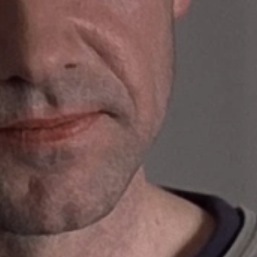So for lack of anything better to do, I played around with getting swscale (a component of ffmpeg) to attempt performing high quality software upscaling. By default we perform bilinear upscaling, and with SD content, it looks pretty crappy, with lots of jagged lines.
After getting it to work, I took a couple of screenshots to show you the difference. In terms of performance, my desktop had enough power to do bicubic upscaling of both SD and 720p content to 1080p. It has to be said that it is definitely an expensive operation.
The win was most obvious — to my eyes, at least — with SD content. Here’s a sample from the intro of a movie. The first is bilinear (notice the jagged circle), and the second is bicubic.


Pretty nice, right? Now let’s try 720p, with some good diagonal lines taken from Kevin Spacey’s jawline:


